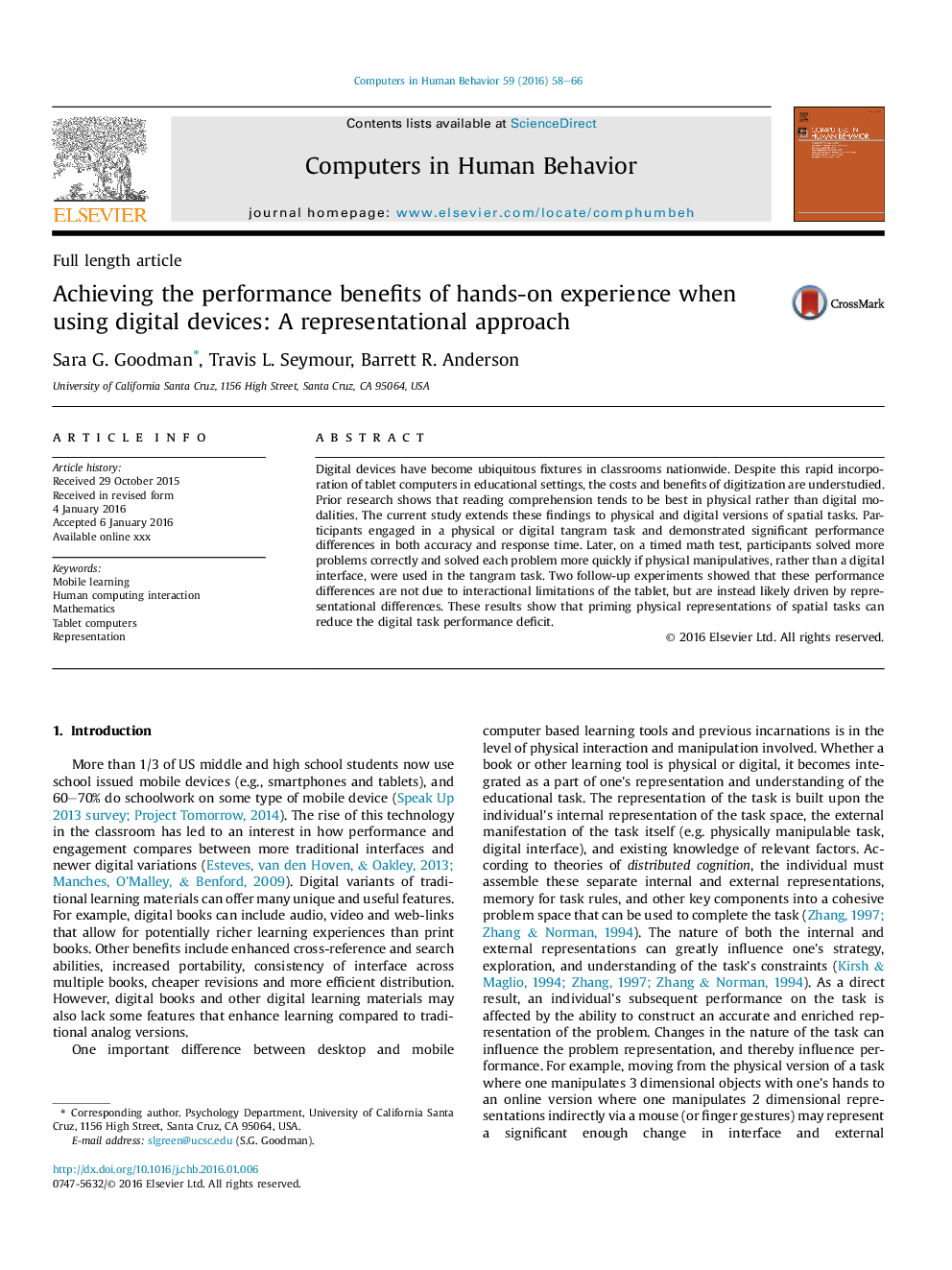| Article ID | Journal | Published Year | Pages | File Type |
|---|---|---|---|---|
| 6837379 | Computers in Human Behavior | 2016 | 9 Pages |
Abstract
Digital devices have become ubiquitous fixtures in classrooms nationwide. Despite this rapid incorporation of tablet computers in educational settings, the costs and benefits of digitization are understudied. Prior research shows that reading comprehension tends to be best in physical rather than digital modalities. The current study extends these findings to physical and digital versions of spatial tasks. Participants engaged in a physical or digital tangram task and demonstrated significant performance differences in both accuracy and response time. Later, on a timed math test, participants solved more problems correctly and solved each problem more quickly if physical manipulatives, rather than a digital interface, were used in the tangram task. Two follow-up experiments showed that these performance differences are not due to interactional limitations of the tablet, but are instead likely driven by representational differences. These results show that priming physical representations of spatial tasks can reduce the digital task performance deficit.
Related Topics
Physical Sciences and Engineering
Computer Science
Computer Science Applications
Authors
Sara G. Goodman, Travis L. Seymour, Barrett R. Anderson,
